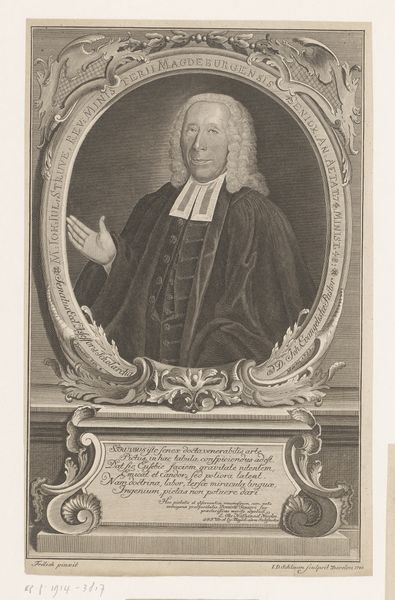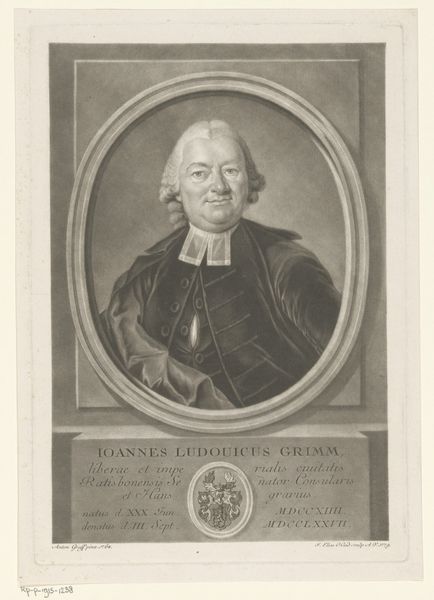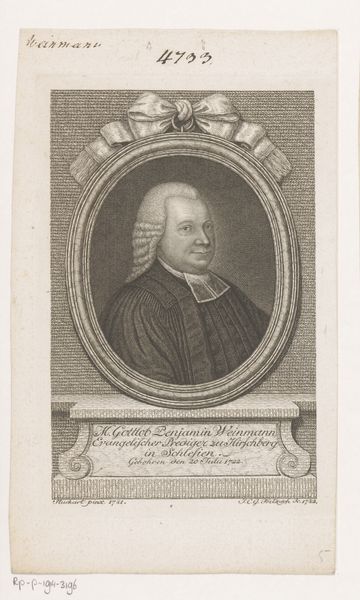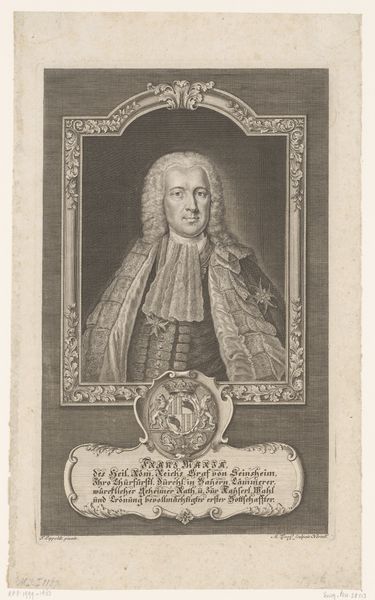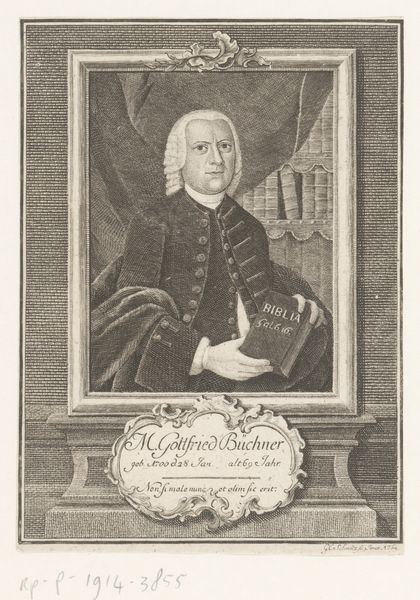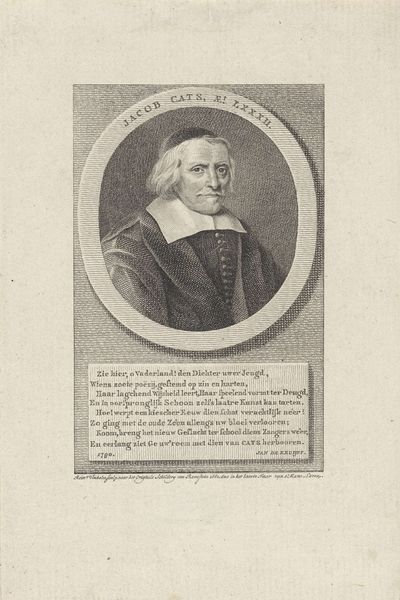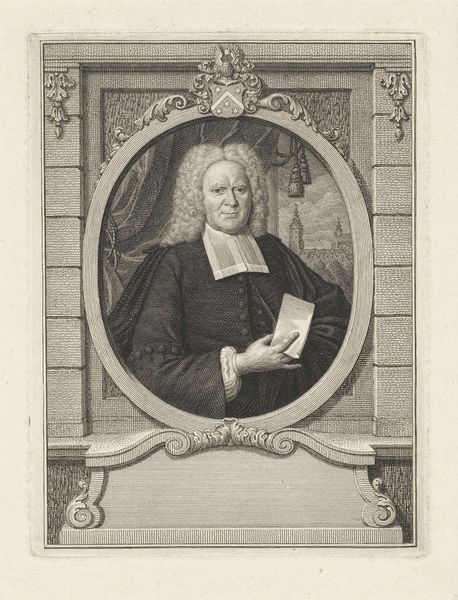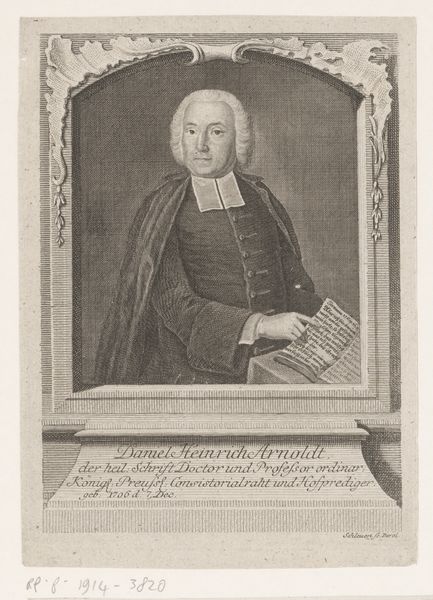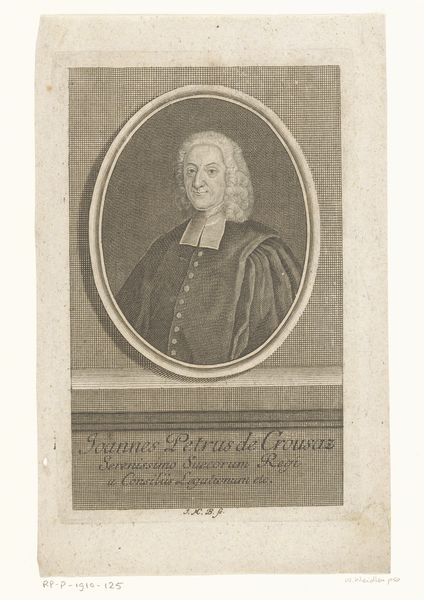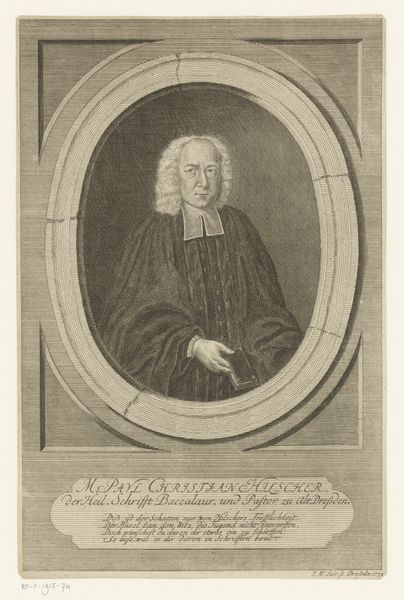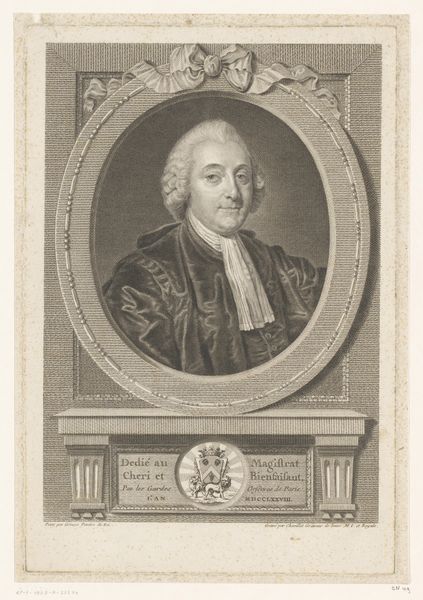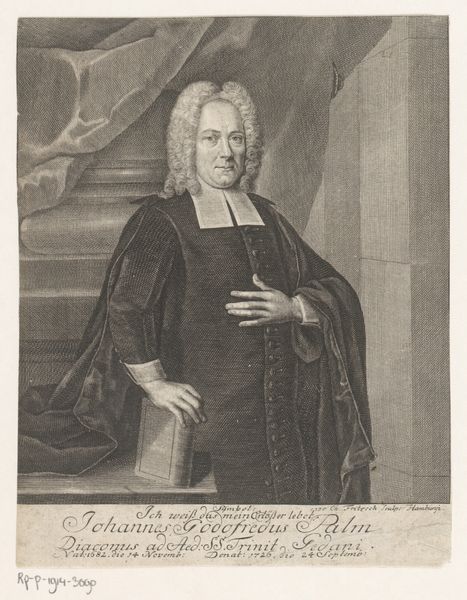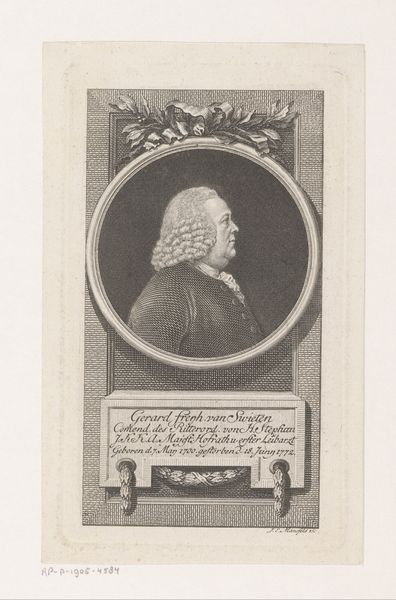
print, paper, engraving
#
portrait
#
baroque
# print
#
old engraving style
#
paper
#
engraving
Dimensions: height 167 mm, width 100 mm
Copyright: Rijks Museum: Open Domain
Curator: Here we have a striking portrait, rendered in the meticulous technique of engraving. This print, created sometime between 1723 and 1762, depicts Johann Jacob Schmidt. Editor: It has a very austere presence. The sharp lines of the engraving, combined with the subject's formal attire, evoke a sense of authority. What can you tell me about the materiality of prints like this from that era? Curator: Well, the engraver, Johann Martin Bernigeroth, likely worked with a copper plate. He would've used a burin to carefully incise lines into the metal. The depth and density of those lines determined the amount of ink held, thus controlling the tones in the final print. Consider the social aspect too; printmaking made images accessible beyond the wealthy elite who could afford painted portraits. Editor: Interesting. Looking at Schmidt, his clerical collar and heavy robe clearly signify his religious standing. The oval frame around the portrait almost feels like a halo, doesn't it? He looks like a stern biblical figure, his expression both learned and forbidding. I also note, it looks as if, a name is prominently displayed beneath, framing the man. What did displaying one's name entail, then and there? Curator: Yes, precisely. The inscription states he was "Pastor Peest et Palov" and his date of birth, placing him definitively in time and space and establishing his identity. Beyond aesthetics, consider how these prints circulated within communities, cementing social hierarchies, professional status. Print workshops at the time had to be efficient manufactories; this artwork reflects Bernigeroth’s artistic labor but also the expectations around representation of clergy in that period. Editor: It makes you think about the role of the clergy then. Was it a symbol of comfort and faith for some and authority and law for others? The visual symbolism does have a powerful emotional charge even today. The black garments against the light of the face—an evocation of inner light, perhaps. It gives him a solemn and serious quality. Curator: I find your interpretation interesting, and the act of engraving would give way, over the coming years, to new lithographic technologies, opening access to yet greater number of artists, tradespeople, patrons. It will eventually bring artistic representation to so many more citizens and common folk! Editor: So from process to reception, a wealth of material to reflect upon with this seemingly straightforward portrait.
Comments
No comments
Be the first to comment and join the conversation on the ultimate creative platform.
